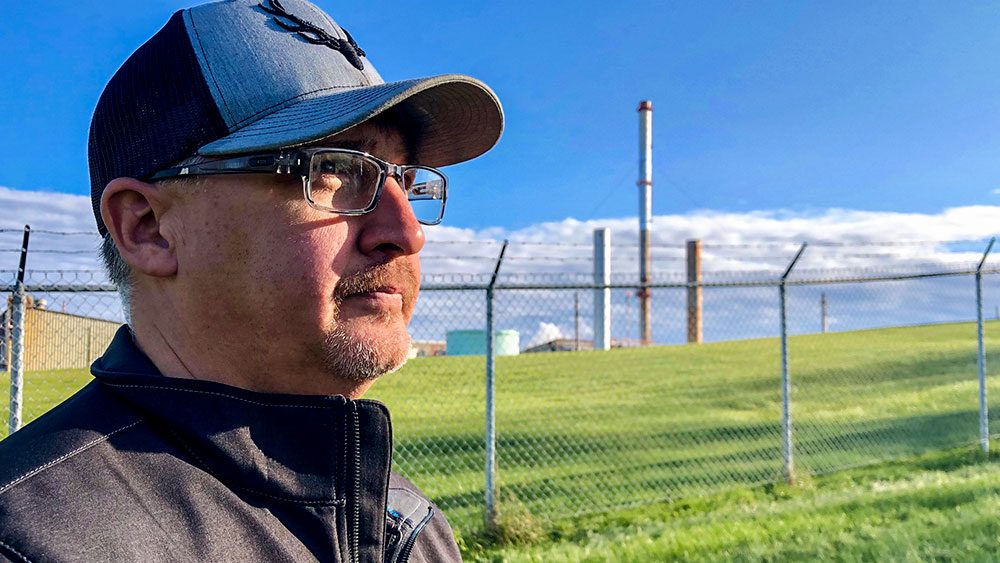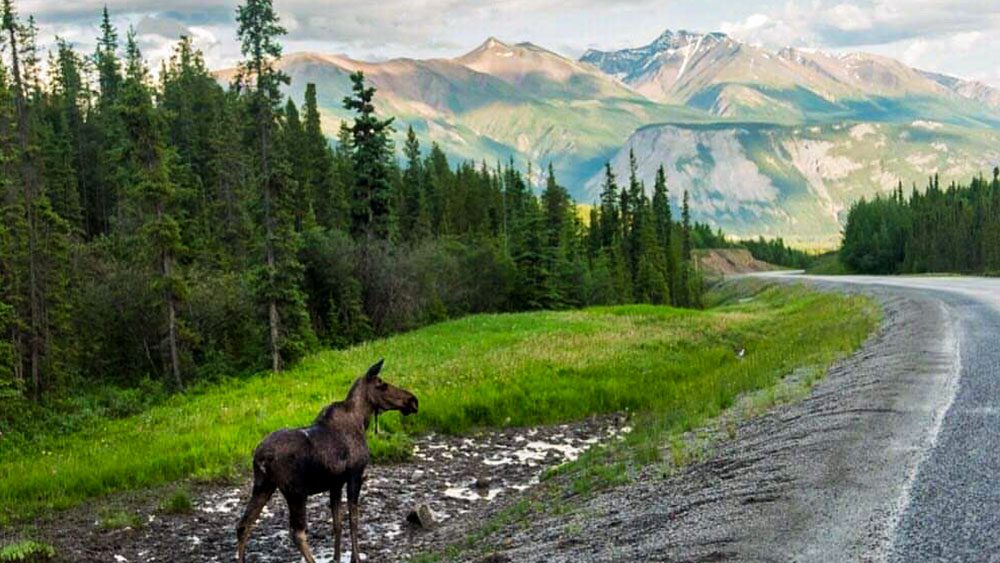Just off the Alaska Highway in British Columbia’s far northeast corner is Fort Nelson First Nation (FNFN).
They are part of Treaty 8 and their traditional territory sits on a wealth of natural gas and timber.
But over the last decade both industries have gone from boom to bust.
“Many people lost their jobs, it was a very devastating time for this community, people had to pack up and leave,” says Chief Sharleen Gale.
Gale started working at one of the local sawmill’s when she was a teenager.
“When I moved here when I was 16 the town was booming with forestry,” says Gale.
“I had an opportunity to work weekend clean up as a student and that was really good money for someone my age.”
(“It has been very challenging for many families here,” says Chief Sharleen Gale of Fort Nelson First Nation. Photo: Laurie Hamelin/APTN)
Between 2005 and 2008, a downturn in the U.S. housing market forced the mills in the area to shut their doors – putting hundreds of workers and loggers out of jobs.
But the Chief says as one industry closed down another ramped up.
“We were very fortunate because oil and gas was starting to pick up, the new technologies were coming and people got to transfer into a new job,” says Gale.
“Some got new training, some got better pay, so it really brought a lot of value to our Nation.”
Then in 2014 gas prices also hit a downturn and the community had nothing left to fall back on.
People and businesses went bankrupt, many had to move or find jobs hours away living in private camps.
“My husband has been working out of town for the last six years and that’s hard on a family,” says Gale.
“It has been very challenging for many families here.”
Harvey Harrold was born and raised in the town of Fort Nelson.
He’s been working in oil and gas for 27 years.
Harrold says he’s one of the lucky ones because he still has work in his hometown.
“My family has been here since 1932, we’re one of the pioneering families of this community and it’s my home,” says Harrold.
“I love it here and don’t want to have to go.”
Harrold drove APTN News out to Spectra’s gas plant on the Alaska Highway.
(Harvey Harrold standing at the Spectra Gas Plant in Fort Nelson First Nation. Photo: Laurie Hamelin/APTN)
He explained that the area sits on massive amounts of natural gas that could provide Canada with heat for a hundred years .
“This plant is capable of producing a billion cubic feet a day, of gas, and right now I think they are at 100 million,” says Harrold.
“So they are only at one tenth of what this plant can produce because of the fallen gas prices due to the American market and their gas production is going up. There is no market in North America for our gas. That’s why the LNG is so critical for production in the north is because that gives us another customer to sell our gas to.”
But Fort Nelson’s gas is not part of the new LNG Canada project.
The $40 billion project got the go ahead last October and will be the largest private- sector investment project in Canadian history.
Fracked natural gas will travel down a new 670 km pipeline from Dawson Creek, B.C. to a processing plant in Kitimat on the coast.
There the gas will be liquefied and shipped off to Asia.
“It’s kind of sad that there is so much gas here and with the market crashing in Canada it’s actually booming in the States,” says Harrold.
“They have less regulations than us and if you came up here and try to do what they do down there it would never be allowed.
Gale says striking a balance between environmental stewardship and economic prosperity is top priority for her people.
Her Nation has twice taken industry to court and won both times.
Read More:
B.C. First Nation says when the gas industry returns it will be ready
“The Fort Nelson First Nation has many reserves, this is the main reserve, but we have people that still live on the land,” says Gale.
“They never got pushed off by the Indian Agent and they continue to practice our traditional ways and that is what really this is all about. That is why it’s so important to find a balance. Our people have to drink that water, they have to hunt the moose, they have to harvest those medicines, that is what keeps them alive. We will never, ever, ever give up any of that just for a few dollars.”
(A moose stands by the side of the Alaska Highway in Fort Nelson First Nation’s traditional territory. Photo courtesy: Chris Gale)
But there is hope on the horizon.
In the summer, the province announced a new community forest jointly managed by FNFN and the municipality, along with a major increase to the region’s annual allowable cut.
The chief is excited, but says to maximize the benefits she wants the local mill to re-open and to buy equity in the project.
“People don’t want to bring our materials to be processed somewhere else,” says Gale.
“It needs to be processed in the town of Fort Nelson.”
Gale, who is also the chair of the First Nations Major Projects Coalition, says in order for First Nations to succeed, all governments must recognize self-governance and create effective partnerships.
“We know that when First Nations are doing well so does the local municipality,” says Gale.
“If we are involved on day one we can help make projects be successful. And the only way forward is for us to have equity positions in these projects and I think it’s important that government and industry understand this, that the way we are thinking is changing, the way we are doing business is changing and the way we want to be involved is changing.”



 (
(








